Physical Address
304 North Cardinal St.
Dorchester Center, MA 02124
Intersection syndrome gets its name because it is caused by tenosynovitis at the intersection of the first and second extensor compartments ( Figs. 84.1 and 84.2 ). Intersection syndrome is also known as ice axe and oarsman’s wrist because of the increased incidence of this painful condition in climbers and rowers. The tendons within these compartments that become inflamed include the extensor carpi radialis longus, the extensor carpi radialis brevis, the extensor pollicis brevis, and the abductor pollicis longus tendons and associated muscles ( Fig. 84.3 ). This inflammation can be a result of direct trauma to the musculotendinous units or a result of overuse or misuse during activities that require repetitive flexion and extension of the wrist. Rowers, scullers, and weightlifters are at risk for developing intersection syndrome because of the repetitive flexion and extension of the wrist required for these activities. Other pain syndromes cause radial-sided wrist pain and must be ruled out when considering the diagnosis of intersection syndrome, including de Quervain tenosynovitis, arthritis of the carpometacarpal joint of the thumb, tendinitis of the extensor pollicis longus, and Wartenberg syndrome. Although the pain of intersection syndrome occurs more dorsally than the more radially located pain of de Quervain tenosynovitis, the 2 are frequently confused ( Fig. 84.4 ). Table 84.1 compares and contrasts these 2 painful conditions of the radial side of the wrist.
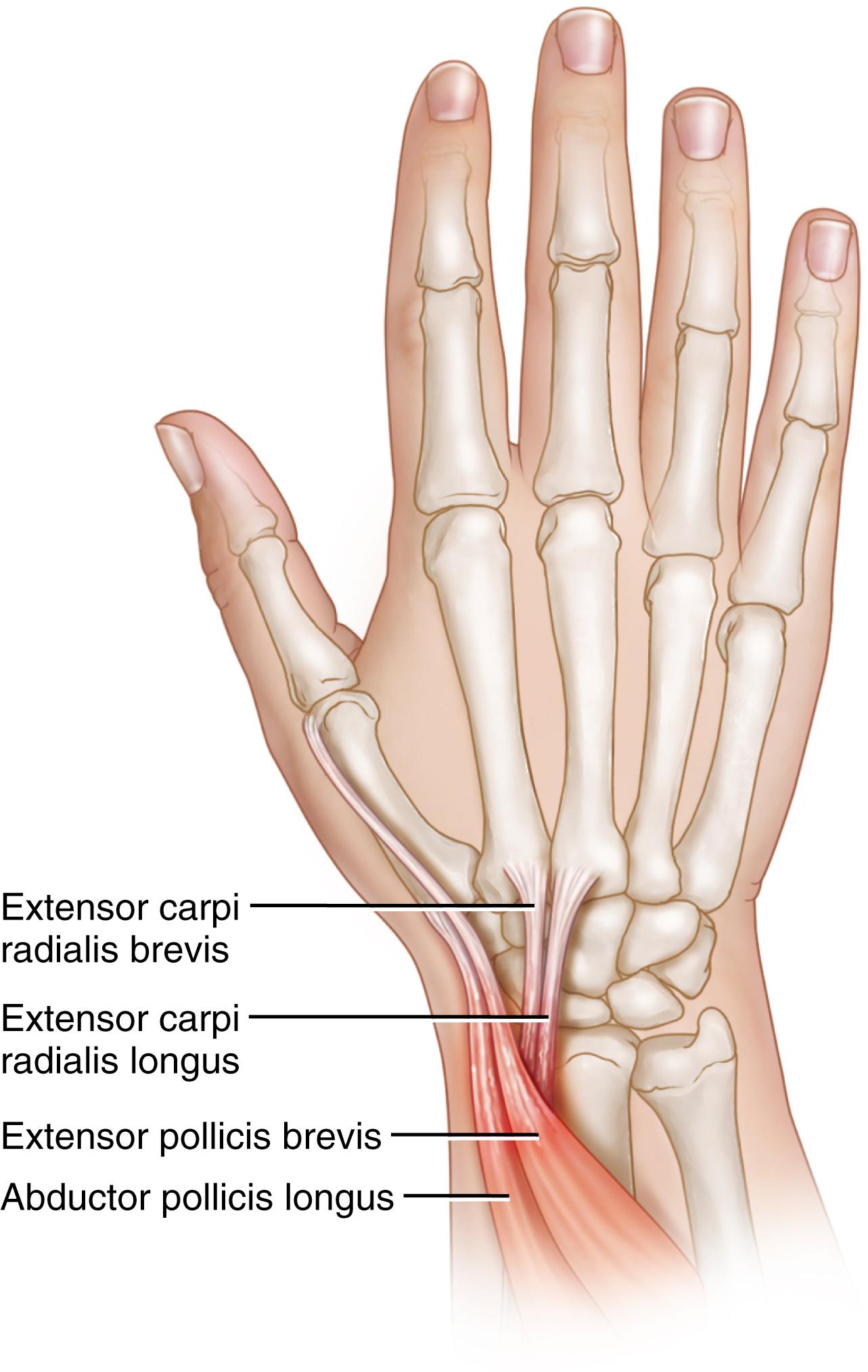
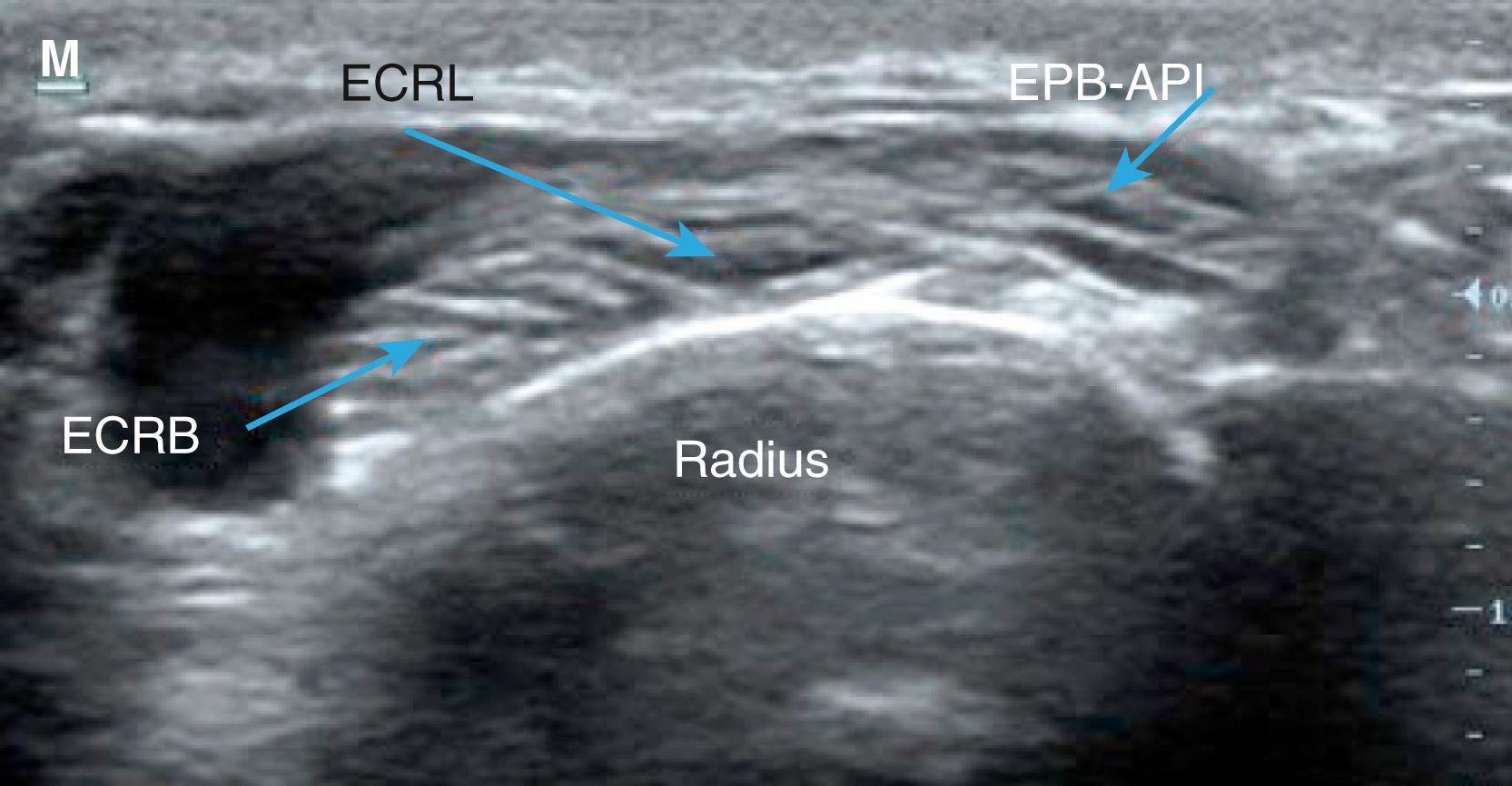
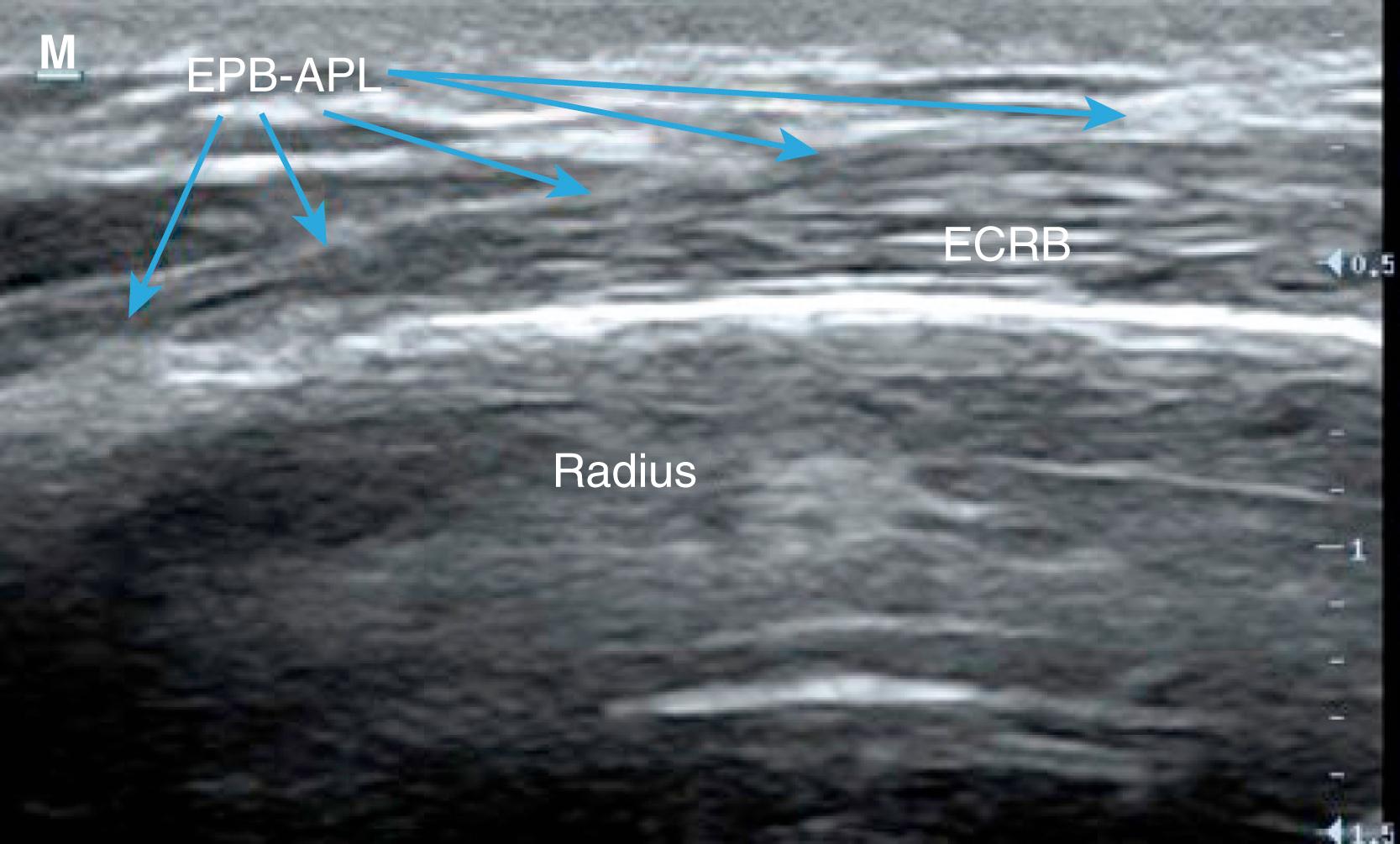
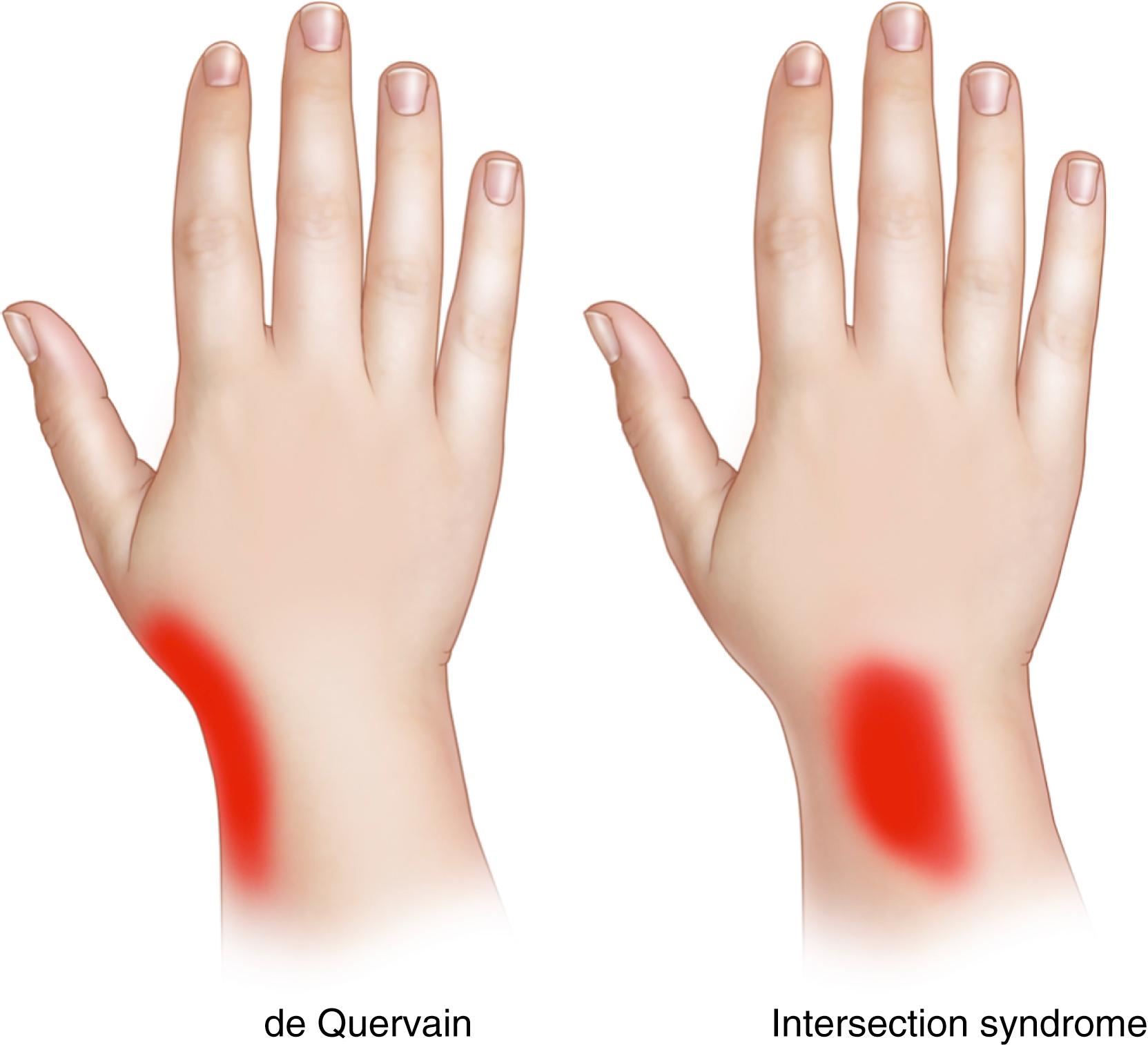
| Intersection Syndrome | de Quervain Tenosynovitis | |
|---|---|---|
| Tendons involved | Extensor carpi radialis longus, extensor carpi radialis brevis, extensor pollicis brevis, abductor pollicis longus | Abductor pollicis longus, extensor pollicis brevis |
| Alternate names | Washerwoman wrist | Oarsman wrist |
| Clinical signs | Creaking tendon sign, wet leather crepitus | Finkelstein sign |
| Location of pain | 7 cm above radial styloid | At the radial styloid |
| Site of injection | Above radial styloid at point of maximal tenderness | At the radial styloid |
| Frequency | Rare | Common |
Patients with intersection syndrome will complain bitterly of radial-sided wrist pain made worse with wrist flexion or extension ( Fig. 84.5 ). The examiner may be able to elicit a positive creaking tendon test if the tendons are acutely inflamed ( Fig. 84.6 ). The examiner may also be able to identify what has been described as wet leather crepitus by careful palpation of the point of intersection during passive or active range of motion of the wrist. As the disease progresses, swelling at the site of intersection is invariably present.

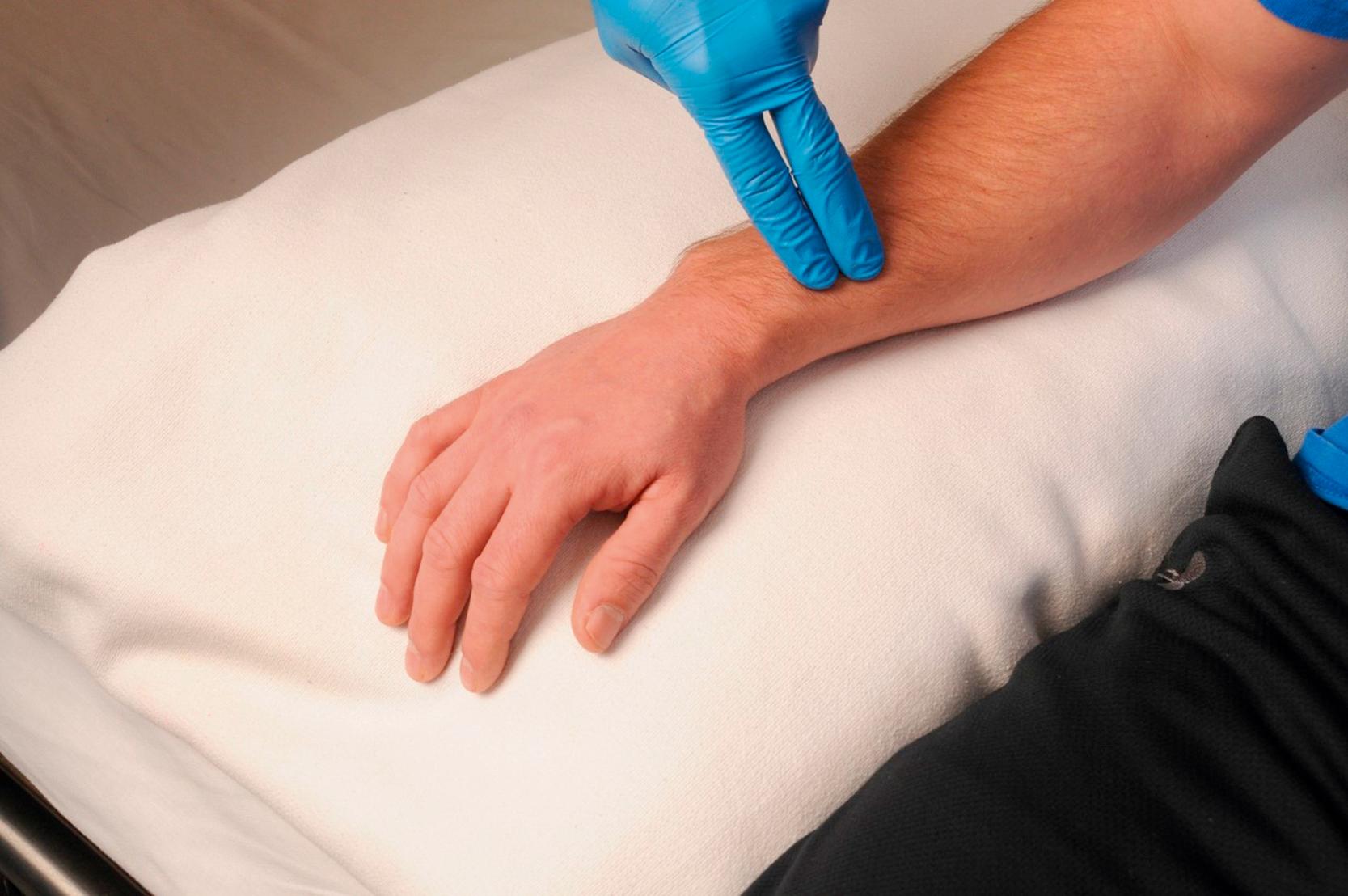
On the basis of the patient’s clinical presentation, additional testing, including complete blood count, sedimentation rate, and antinuclear antibody testing, may be indicated. Magnetic resonance imaging of the wrist is indicated if tendon rupture is suspected and to further confirm the diagnosis if de Quervain tenosynovitis is suspected. Radionuclide bone scanning is useful to identify stress fractures of the wrist not seen on plain radiographs. Ultrasound imaging may also help confirm the diagnosis as well as aid in needle placement when performing this injection technique ( Fig. 84.7 ).

Intersection syndrome involves the first 2 compartments of the 6 compartments that house the extensor tendons of the distal dorsal forearm and dorsal wrist. Passing obliquely over the extensor carpi radialis brevis and extensor carpi radialis longus tendons of the second compartment and the abductor pollicis longus and extensor pollicis brevis of the first compartment intersect at their musculotendinous junctions. This intersection is just proximal to the extensor retinaculum, which serves to tether down the tendons and may contribute to the evolution of intersection syndrome ( Fig. 84.8 ).
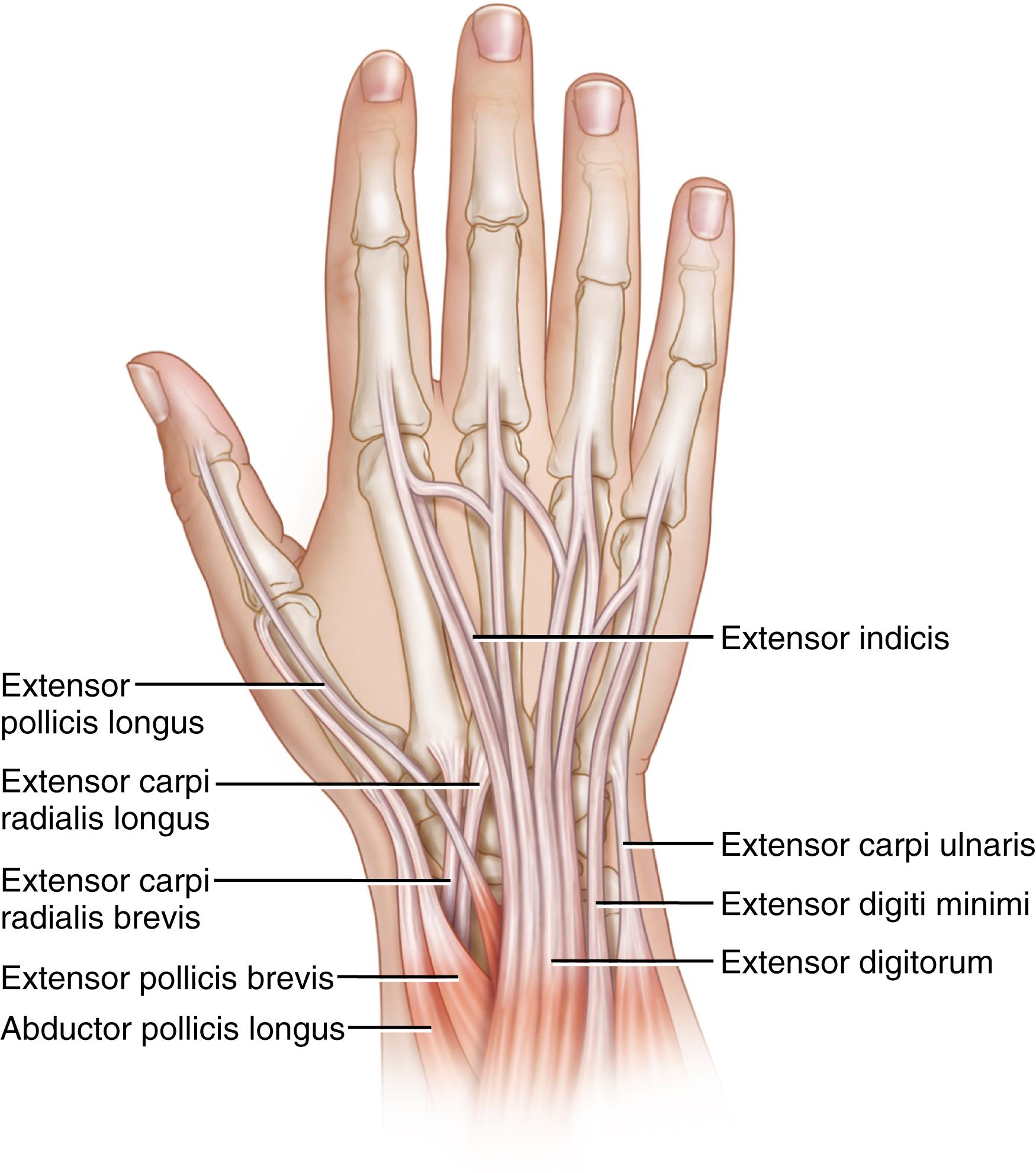
Become a Clinical Tree membership for Full access and enjoy Unlimited articles
If you are a member. Log in here